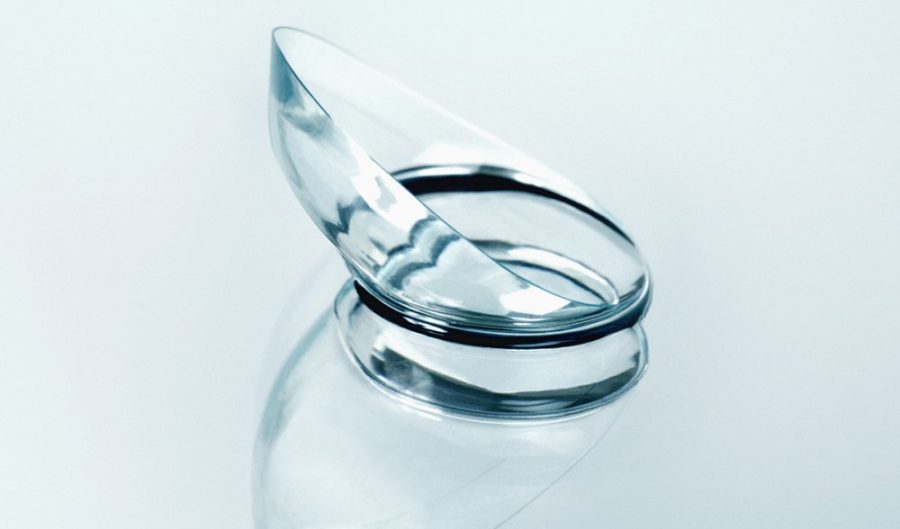10 Aussie inventions that make your life easier

Australians are prolific inventors. From the earliest Aboriginal inventions including boomerangs, woomeras, and didgeridoos, Australia boasts a rich history of innovation. Aussie researchers have spearheaded medical breakthroughs including the manufacture of penicillin as an antibiotic and the development of the cochlear implant.
The technology behind Google Maps and the black box flight recorder are products of Australian ingenuity. The following is a list of everyday items that make our lives easier – for which we have Aussies to thank.
1) The mechanical ice-maker
Born in Scotland, James Harrison moved to Australia at the age of 21. While James worked for a number of Australian publications as a journalist and editor, he is best known for his innovations in the field of refrigeration. In 1854, James designed and built the first mechanical ice-making machine in Geelong, Victoria, which was soon made commercially available. He was a pioneer in the area of commercial meat exports at a time when Australia’s cattle export industry was still very young, proving that you could freeze meat for a long time and have it remain edible. So the next time you rummage around your freezer for a handful of ice cubes, imagine a time before mechanised ice production – when ice was chipped out of a frozen lake, stored in a chilled location (if one was available), and was considered to be the ultimate in luxury.
2) Wi-Fi hotspots
While the advent of wireless internet capabilities involved a number of research teams across the world, we have Aussie inventors to thank for allowing us to access the internet in coffee shops, airports, train stations, and even on buses. Highly sought-after wireless hotspots were once ineffective means of accessing the internet as the connection in indoor spaces created too much echo from radio waves, which disrupted the connection. Using radioastronomy technology, CSIRO researchers developed a new fast chip in the early 1990s which solved this problem, resulting in quicker, more reliable wireless internet access, particularly indoors.
3) The notepad
Today, if we need to jot something down, most of us turn straight to our smartphone or other electronic device. As the traditional pen and pad are all but obsolete, have you ever thought about the inventor of the first paper notebook? In 1902, J.A. Birchall of Birchalls, a Launceston, Tasmania-based stationery shop, decided that the cumbersome method of selling writing paper in folded stacks of ‘quires’ (four sheets of paper or parchment folded to form eight leaves) was inefficient. As a solution, he glued together a stack of halved sheets of paper, supported by a sheet of cardboard, creating what he called the ‘Silver City Writing Tablet’ – the first notepad.
4) The rotary clothes hoist
The rotary clothesline has become so common that it’s now unusual to see an Aussie backyard without one. Take a moment to consider the clumsy web of rope that would have to be strung across your lawn or garden if it weren’t for this compact alternative. Gilbert Toyne of Adelaide developed several versions of his ‘clothesline and hoist’ mechanism, patented in 1911, 1923 and 1925. Similar models, such as the popular ‘Hills Hoist’, were developed later.
5) Stainless steel braces
Anyone who’s ever had a mouth full of orthodontic metal knows that getting your braces tightened is not a pleasant affair – and the addition of skull-encompassing headgear and a screw-based tightening mechanism sounds particularly painful. Percy Raymond Begg of Adelaide thought so too. With mercy in his heart, Percy collaborated with metallurgist Arthur Wilcock to develop a gentler, stainless steel system in 1956 involving gradual adjustments rather than earlier brute force methods used to straighten teeth.
6) The plastic wine cask
As the proud stewards of world-renowned vineyards and exceptional wines, Aussies know the value of a durable wine cask. While glass bottles were the standard container used to store and transport wine, Angoves Wines of Renmark, South Australia sought both a method to ship their wines in bulk as well as a way to keep wine fresh after opening. Inspired by the European ‘bladder’ design, W J Marshall developed a polyethylene sack in 1966 which preserves the wine’s freshness, collapsing as wine is poured. This prevents air from spoiling the wine, as is common when an open bottle is exposed to air for several days. A plastic ‘tap’ was added to this design later.
7) Long-wear contact lens
While contact lenses became popular as a discreet alternative to glasses, they were not always as convenient to use as they are today. CSIRO and the University of New South Wales joined an international research team in 1991 with the goal of developing comfortable long-wear contact lenses. As well as being durable, the lenses had to be thin, allowing optimal oxygen transfer to promote cornea health. The lenses they developed in 1999 were made from a silicone hydrogel which can safely be worn for 30 days and nights without being removed.
8) The electric drill
While the concept of a drill has been in use for thousands of years, the advent of the electric motor in the 19th century led to the development of the electric drill. Designed by Arthur James Arnot and William Blanch Brain in Melbourne in 1889, the size of the first electric drill was, to say the least, massive. It was designed to cut through coal and rock for mining applications. While this initial model was far from portable, the same technology was refined to create the modern-day hand drill.
9) The baby safety capsule
While the use of car safety restraints for small children is common today, this was not the case before the enactment of Australian seatbelt legislation, which took effect across Australia in the 1960s and 70s. In response to the need for child safety restraints, Bob Botell and Bob Heath developed the ‘Safe-n-Sound’ Baby Safety Capsule in 1984. They crafted their design so that it would lock into a standard-sized car seat, allowing babies and small children to be strapped-in and secure.
10) Salt water pool chlorination system
While we all enjoy a refreshing dip in a swimming pool, the chemicals used to clean and maintain pools, particularly chlorine, can have effects on human health ranging from eye and skin irritation to respiratory difficulty. In the 1970s, Len David researched alternative methods of pool maintenance to reduce the amount of chemicals used in pool cleaning. His work led to the development of the salt water chlorination system which is built directly into the pool. This mechanism produces chlorine by facilitating a chemical reaction between salt and an electric current, rather than being added in large amounts by hand.




